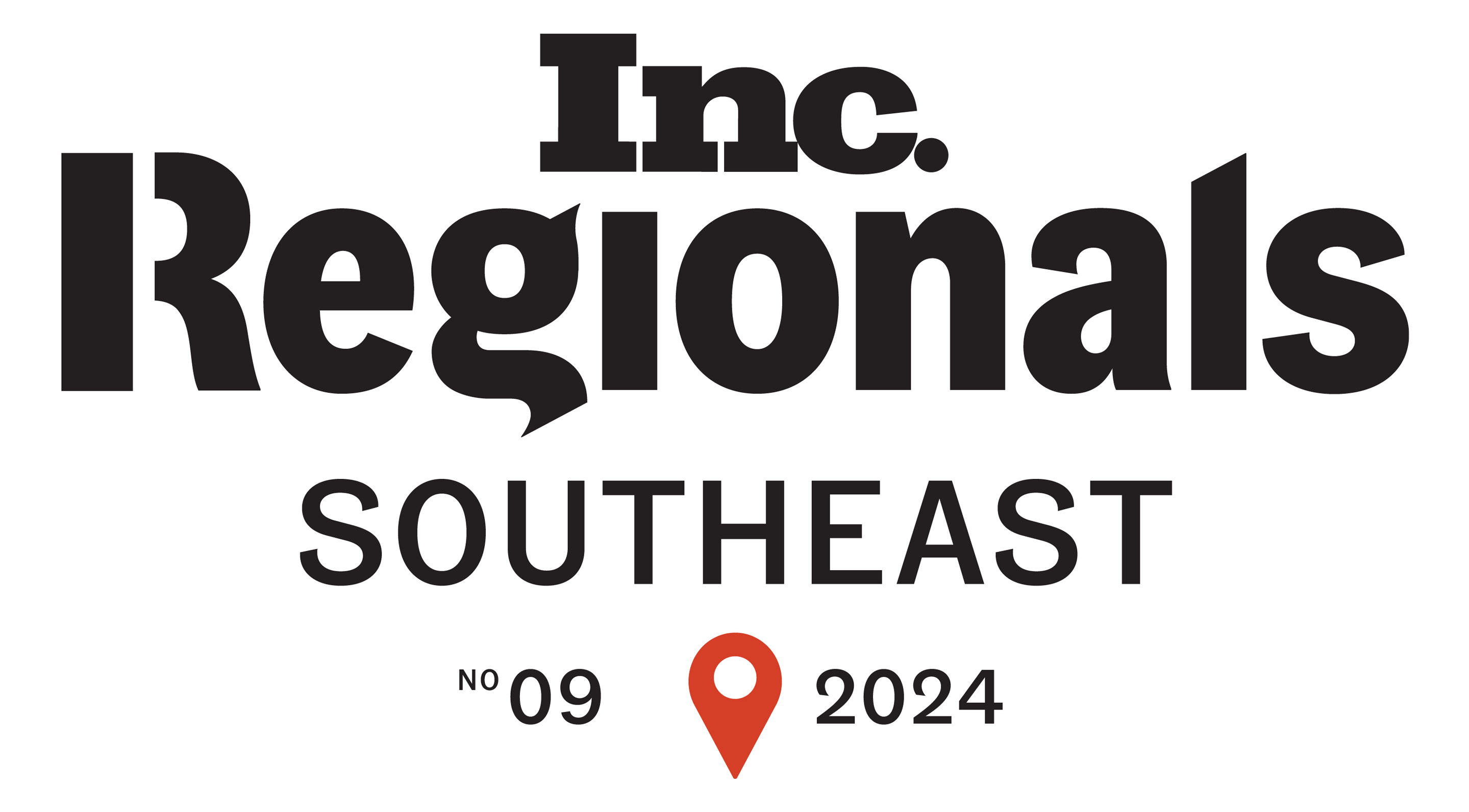For manufacturers and original equipment manufacturers (OEMs), offering extended warranties is more than just an optional add-on. It's a strategic opportunity to boost profitability, foster customer loyalty, and differentiate your brand in a competitive market.
This comprehensive guide explores the key benefits, effective strategies, and practical tools to help you leverage extended warranties for optimal success. By understanding your customers' needs and implementing best practices, you can turn extended warranties into a win-win for both your business and your customers.
The Powerful Benefits of Extended Warranties
Extended warranties offer a wealth of advantages that go beyond mere product protection. Here are some compelling reasons why they should be an integral part of your overall strategy:
1. Enhanced Customer Satisfaction
Customers appreciate the peace of mind that comes with extended coverage. When they invest in an extended warranty, they feel confident that unforeseen repair costs won't burden them. This added sense of security often translates into higher satisfaction and improved brand perception.
2. Increased Customer Loyalty
Satisfied customers tend to stick around. By offering extended warranties, you create a sense of trust and commitment that can foster long-lasting relationships. Loyal customers are more likely to make repeat purchases and become brand advocates, driving referrals and positive word-of-mouth.
3. Financial Benefits
Extended warranties represent a significant revenue stream for manufacturers and OEMs. Many customers are willing to pay a premium for additional coverage, contributing directly to your bottom line. Even if the majority of products don't require repairs within the warranty period, the added revenue can be substantial.
4. Improved Customer Retention
When customers invest in an extended warranty, they signal their intention to keep the product for an extended period. This investment increases the chances that they will remain loyal to your brand, leading to repeat business and long-term customer retention.
5. Higher Customer Lifetime Value
The combination of increased satisfaction, loyalty, and retention ultimately translates into a higher customer lifetime value. Customers who trust your brand to take care of their needs are more likely to purchase additional products and services, multiplying the financial returns from each customer relationship.
6. Positive Impact on Customer Surveys
Extended warranties are often a key factor in customer satisfaction surveys. Customers who have purchased extended coverage tend to rate their overall experience more positively, which can boost your brand's reputation and standing in the market.
7. Integration with Loyalty Programs
Extended warranties can seamlessly integrate with your existing customer loyalty programs. By offering discounts or special deals on extended warranties to your loyal customers, you not only drive sales but also enhance the perceived value of your loyalty initiatives.

Educating Customers: Keys to Effective Communication
Clearly communicating the benefits of extended warranties is crucial for driving customer adoption. Here are some effective strategies to educate and engage your customers:
1. Clear and Concise Communication
Customers need to understand exactly what they're getting with an extended warranty. Effective communication goes beyond explaining costs; it also means detailing the peace of mind, long-term savings, and added value customers receive from extended coverage.
2. Leveraging Product Literature and Packaging
Well-designed product literature and packaging that highlight the extended warranty can be highly persuasive. Use clear labels, stickers, or inserts to announce the availability and benefits of extended warranties, catching the customer's attention right from the start.
3. Utilizing Specific Marketing Channels
Different customers consume information differently. Some might prefer social media posts, while others might respond better to email newsletters or traditional advertising. Identify the most effective channels for your target audience and leverage them to maximize the reach and impact of your extended warranty messaging.
4. Sharing Customer Testimonials
Real-life stories can be extremely powerful in influencing customer decisions. Use customer testimonials to share positive experiences about the benefits of extended warranties. When potential buyers see that others have had positive experiences, they are more likely to invest in the added protection.
5. Maintaining Clear Warranty Terms
Vague or confusing terms and conditions can frustrate customers and undermine their trust. Ensure that your warranty terms are clear, straightforward, and easy to understand. Use simple language and avoid jargon that might confuse or alienate your customers.
6. Leveraging Customer Feedback
Customer feedback is a valuable resource for understanding their questions, concerns, and perceptions about extended warranties. Regularly gather and analyze feedback to identify areas for improvement, and use these insights to update your communication strategies, making them more effective and customer-centric.
7. Integrating with Sales Scripts
Your sales team is often the first point of contact for customers. Equip them with well-crafted scripts that clearly explain the value proposition of extended warranties. These scripts should address common customer questions and objections, effectively conveying the benefits of additional coverage.
Optimizing Pricing for Extended Warranties
Pricing extended warranties is a delicate balance between profitability and customer affordability. Here are some strategies to help you find the optimal pricing sweet spot:
1. Understanding Key Pricing Factors
Pricing extended warranties involves multiple factors, including the product's cost, reliability, and the anticipated number of claims. You need to strike a balance between making the price attractive to customers while ensuring it covers the potential costs of claims and contributes to your profitability.
2. Balancing Profitability and Affordability
Conduct thorough market research to understand what customers are willing to pay for extended warranties. This data can help you set fair and competitive prices that meet both your financial goals and customer expectations.
3. Utilizing Tiered Pricing Strategies
One effective approach is to offer tiered pricing plans, such as basic, intermediate, and premium warranty options. This strategy allows customers to choose the level of coverage that best fits their needs and budget, while also enabling you to capture a wider audience and maintain profitability across different segments.
4. Adapting to Market Conditions
Market conditions can significantly impact the pricing of extended warranties. During economic downturns, customers may be more price-sensitive, making it crucial to offer competitive prices. Conversely, in a booming economy, you might be able to charge a premium for the added peace of mind.
5. Monitoring Competitor Pricing
Keep a close eye on what your competitors charge for similar extended warranty offerings. If your prices are significantly higher, customers might opt for a competitor's product, potentially impacting your market share and profitability.
6. Leveraging Customer Segmentation
Not all customers are the same, and their willingness to pay for extended warranties may vary. Segment your customer base based on demographics, buying behavior, and preferences, and tailor your pricing strategies accordingly. This targeted approach can make your extended warranties more appealing and accessible to different customer segments.
7. Utilizing Pricing Analytics
Data analytics can be a powerful tool in setting the right prices for extended warranties. Analyze past sales data, customer feedback, and market trends to optimize your pricing strategy continually. Pricing analytics can provide valuable insights into what works and what doesn't, helping you make informed decisions and stay ahead of the competition.
Timing is Everything: When to Offer Extended Warranties
Knowing the best times to offer extended warranties can significantly impact their adoption and success. Here are some strategies to consider:
1. Effectiveness at the Point of Sale
The point of sale is often the best time to introduce an extended warranty. At this moment, the customer is already in a buying mindset and more receptive to additional offers. Train your sales team to seamlessly present the extended warranty option just before finalizing the sale.
2. Ensuring Customer Receptiveness
Timing is everything when it comes to offering extended warranties. Customers are more likely to be receptive when they are still excited about their purchase. Offering the warranty too late might result in missed opportunities, as the initial excitement and buying momentum may have waned.
3. Employing Specific Sales Techniques
Bundling the extended warranty with other accessories or offering a time-limited discount can encourage quicker decisions. These techniques can create a sense of urgency and perceived value, making the extended warranty more appealing to customers.
4. Understanding Customer Behavior
Some customers might be more inclined to purchase an extended warranty immediately, while others may need more time to consider the option. Leverage data on customer buying behaviors to determine the optimal timing for presenting the extended warranty offer.
5. Considering Sales Funnel Stages
The stage of the sales funnel can also impact the effectiveness of extended warranty offers. Early-stage customers might need more information about the product before considering an extended warranty. In contrast, those closer to making a purchase decision might be more receptive to the offer.
6. Segmenting Your Customer Base
Segmenting your customers can help in timing the extended warranty offer appropriately. For instance, first-time buyers might need more convincing, while repeat customers who already trust your brand might be more readily willing to purchase an extended warranty.
7. Leveraging Customer Data
Utilize customer data to determine the best times and methods to offer extended warranties. Data such as past purchase behavior, product preferences, and feedback can provide valuable insights into the optimal timing for presenting the warranty offer, allowing you to maximize customer receptiveness and conversion rates.

Creating Effective Sales Scripts for Extended Warranties
Well-crafted sales scripts can be a game-changer in driving extended warranty sales. Here are some key elements to incorporate:
1. Clear Value Proposition
A successful sales script should clearly articulate the value proposition of the extended warranty, highlighting the benefits and addressing common customer objections. This helps your sales team convey the offering effectively and address potential concerns.
2. Tailored Content for Different Segments
Not all customers are the same, and your sales scripts should reflect that. Tailor your scripts according to different customer segments, considering factors such as their familiarity with your brand, product knowledge, and specific needs.
3. Training and Role-playing
Proper training is crucial for your sales team to effectively use these scripts. Role-playing exercises can be particularly beneficial, as they allow your team to practice overcoming potential objections and become more confident in real-world scenarios.
4. Incorporating Customer Testimonials
Incorporating customer testimonials within your sales scripts can be highly persuasive. When potential buyers hear real stories from satisfied customers, they are more likely to see the value in purchasing an extended warranty.
5. Clear and Concise Language
Ensure your sales team explains the terms of the extended warranty clearly and succinctly. Avoid jargon and use simple language to ensure customers fully understand what they're buying.
6. Regular Updates Based on Feedback
Continuously update your sales scripts based on customer feedback. This helps address any common concerns or misconceptions that customers might have, making your pitch more effective and trustworthy.
7. Integration with Sales Strategies
Sync your extended warranty sales scripts with your broader sales strategies to create a cohesive selling experience. Ensure your scripts align with your marketing messages and overall brand voice for consistent communication across all touchpoints.
The Role of Technology in Streamlining Extended Warranty Sales and Service
Leveraging the right technology can significantly streamline and enhance your extended warranty sales and service processes. Here's how:
1. Simplifying the Purchase Process
Online portals and mobile apps can make it easy for customers to add extended warranties to their purchases. These digital platforms provide a smooth and hassle-free buying experience, increasing the likelihood of customers opting for additional coverage.
2. Utilizing Specific Software and Tools
Various software tools and platforms can help manage extended warranty sales and services more effectively. Customer Relationship Management (CRM) systems, for instance, allow you to keep track of warranty sales, customer interactions, and follow-up opportunities, ensuring no potential revenue is left on the table.
3. Improving Customer Experience
Tech tools like AI-powered chatbots can enhance the customer experience by providing instant answers to common queries about extended warranties. This not only increases customer satisfaction but also reduces the load on your customer service team, allowing them to focus on more complex issues.
4. Integrating with CRM Systems
Integrating your extended warranty sales and service processes with your CRM system ensures seamless management of customer data. This integration enables personalized experiences, timely follow-ups, and targeted marketing efforts, all of which can drive higher sales and customer satisfaction.
5. Leveraging AI-Powered Chatbots
AI-powered chatbots can handle routine queries and provide instant support, ensuring customers get the information they need quickly. This not only improves the customer experience but also increases the likelihood of them purchasing an extended warranty.
6. Utilizing Mobile Apps
Mobile apps can make purchasing and managing extended warranties more convenient for customers. Features like in-app purchases, reminders for renewal, and easy access to warranty terms can significantly enhance the overall customer experience.
7. Streamlining Customer Support
Automated systems and online portals can streamline customer support for extended warranties. When customers have easy access to information and can resolve common issues themselves, it frees up your support team to focus on more complex queries, improving overall efficiency and customer satisfaction.
Measuring Success: Key Metrics and Strategies
Measuring the success of your extended warranty sales strategies is crucial for continuous improvement and maximizing profitability. Here are some key metrics to track and strategies to consider:
1. Monitoring Key Metrics
Track the number of warranties sold, revenue generated, customer satisfaction scores, and other relevant metrics to gauge the effectiveness of your extended warranty sales strategies. This data will help you identify areas for improvement and make data-driven decisions.
2. Utilizing Data Analytics
Use data analytics to refine your extended warranty sales strategies continually. By analyzing sales trends, customer feedback, and market conditions, you can make informed decisions to enhance your sales and service efforts.
3. Setting Achievable Benchmarks
Define achievable benchmarks for your extended warranty sales, such as targets for sales volume, customer satisfaction scores, and revenue growth. Regularly reviewing these benchmarks will help you stay on track and adjust your strategies as needed.
4. Leveraging Sales Analytics
Sales analytics can provide invaluable insights into what's working and what's not with your extended warranty sales strategies. Use these insights to tweak your approach, ensuring you're continually improving and meeting your sales goals.
5. Soliciting Customer Feedback
Customer feedback is a vital resource for measuring the success of your extended warranty sales. Regularly solicit and analyze feedback to identify areas for improvement and ensure your customers are satisfied with their purchases.
6. Monitoring Sales Performance Metrics
Key sales performance metrics, such as conversion rates and average transaction value, can help you gauge the effectiveness of your extended warranty sales strategies. Monitor these metrics closely and make adjustments as necessary to enhance performance.
7. Tracking Customer Satisfaction Scores
Customer satisfaction scores are a direct indicator of how well your extended warranty offerings are being received. High scores typically mean happier, more loyal customers, which can lead to increased sales and long-term profitability.
Customizing Extended Warranty Plans for Customer Segments
Different customers have different needs, and offering customized extended warranty plans can be a powerful way to cater to these diverse requirements. Here are some strategies to consider:
1. Understanding Customer Needs
Survey your customers and analyze purchasing behaviors to understand what they value most in an extended warranty plan. This insight will help you create offerings that resonate with their specific needs and preferences.
2. Offering Flexible and Customizable Plans
A good customizable warranty plan should be flexible, easy to understand, and offer options that cater to various needs. Elements like coverage duration, scope of protection, and pricing tiers can be adjusted to fit different customer segments.
3. Modular Warranty Plans
One successful strategy is to offer modular warranty plans where customers can pick and choose the types of coverage they need. This approach not only makes the warranty more attractive but also allows you to cater to a broader range of customers with diverse requirements.
4. Tailoring Plans Based on Demographics
Customer demographics such as age, occupation, and income level can significantly impact their warranty preferences. Tailor your warranty plans based on these factors to make them more appealing and relevant to different customer segments.
5. Considering Customer Behavior
Understanding customer behavior, such as buying patterns and product usage, can help in customizing extended warranty plans. For instance, heavy users might need more comprehensive coverage compared to occasional users.
6. Prioritizing Customer Preferences
Customer preferences should be at the heart of your extended warranty plans. Use surveys and feedback forms to gather insights into what customers truly want, and adjust your offerings accordingly.
7. Leveraging Customer Segmentation Data
Segmentation data provides a detailed view of different customer groups, allowing you to create more targeted and effective warranty plans. Use this data to offer personalized options that meet the unique needs of each segment, enhancing customer satisfaction and loyalty.
Partnering with Retailers for Increased Sales
Partnering with retailers can significantly boost your extended warranty sales by providing more exposure and easier purchase options for customers. Here are some strategies to consider:
1. Understanding the Benefits of Retail Partnerships
Retailers can tap into their existing customer base and leverage their sales channels to promote your extended warranties. By partnering with them, you can access a wider audience and increase your market reach.
2. Ensuring Effective Promotion
Effective promotion by retailers is crucial for the success of extended warranty sales. Work closely with your retail partners to ensure they understand the benefits of your warranties and are equipped to sell them effectively.
3. Managing Partnerships Strategically
Managing retail partnerships requires clear communication and mutual goals. Regular meetings, shared sales data, and joint marketing efforts can go a long way in ensuring a successful partnership.
4. Offering Retailer Incentives
Incentivize retailers for selling your extended warranties by offering commissions, bonuses, or exclusive deals. These incentives can motivate retailers to prioritize your products and promote your warranties more actively.
5. Providing Training Programs
Training programs for retailer staff can significantly improve the effectiveness of extended warranty sales. Ensure that retail sales teams are knowledgeable about your warranties and can effectively communicate their benefits to customers.
6. Accessing Retailer Sales Data
Access to retailer sales data is invaluable for analyzing performance and identifying opportunities for improvement. By reviewing sales data, you can understand which strategies are working and which areas need adjustment. This data-driven approach allows for more targeted and effective sales tactics.
Partnering with retailers is a powerful strategy for increasing extended warranty sales. By understanding the benefits, ensuring effective promotion, managing partnerships strategically, offering incentives, providing training, and accessing sales data, you can maximize the potential of these partnerships and achieve significant growth in your extended warranty sales.
Next Steps
Ready to turn your warranties into a customer loyalty goldmine?
Don't let warranty management be an afterthought. Embrace it as a powerful opportunity to build trust, showcase your values, and create customers for life.
And if you want to take your warranty game to the next level, it's time to learn more about OnPoint Warranty.
OnPoint Warranty is your secret weapon for transforming warranties from a necessary evil into a competitive advantage. With their cutting-edge platform and expert support, you can:
- Streamline your claims process for maximum efficiency and customer satisfaction
- Offer extended warranties that delight customers and differentiate your brand
- Leverage warranty data for personalized, proactive customer engagement
- And much more
If you're serious about building customer loyalty that lasts, you can't afford to ignore the power of warranties. And you can't afford to settle for anything less than the best in warranty management.
So what are you waiting for? Give us a shout today and learn how we can help you turn warranties into a customer loyalty goldmine. Your customers (and your bottom line) will thank you.








